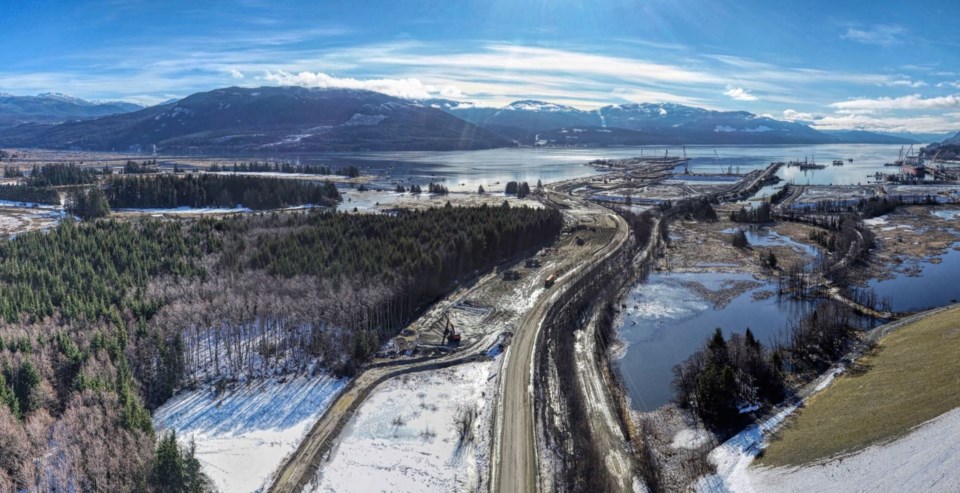Employees at the LNG Canada work site in Kitimat, B.C., complained multiple times about unsafe working conditions just months before the facility experienced a COVID-19 outbreak, according to WorkSafe BC inspection reports obtained by The Narwhal.
The outbreak at LNG Canada started on Nov. 19 and there are now 54 cases. In the months leading up to the outbreak, workers raised concerns about COVID-19 cleaning procedures in common areas, rooms and work spaces, prompting inspections by WorkSafe BC on Aug. 28 and Oct. 19.
The documents also reveal that a WorkSafe BC inspection of the Site C work camp’s sewage treatment facility in northeast B.C. on March 19 found the facility did not have a plan to sufficiently protect workers from pathogens, body fluids, human waste, mould and COVID-19.
WorkSafe BC didn’t say if or how the issues flagged during the inspections were resolved.
The first case of COVID-19 at Site C was in July and there have been 17 cases to date. On Dec. 4, BC Hydro reported five active cases and 18 people in self-isolation.
The revelations come as calls grow for B.C. to shut down work camps or risk further community spread with northern hospitals already stretched thin.
More than 180 frontline health workers have signed an open letter to Provincial Health Officer Dr. Bonnie Henry that started circulating on Thursday, calling on her to immediately shut down industrial work camps on Indigenous territories.
“To put the interests of economy and industry ahead of Indigenous lives is not public health,” the letter says. “To put Indigenous Elders and youth at further risk in the midst of a pandemic is to say quite clearly that Indigenous lives still do not matter in B.C.”
On Thursday (Dec. 3), the Unist’ot’en Camp said Coastal GasLink confirmed five new cases at its camp 9A on Unist’ot’en territory. Sley’do Molly Wickham, Gidimt’en Camp spokesperson, said at least one Wet’suwet’en worker in a Coastal GasLink work camp recently contracted the virus and is now hospitalized in an induced coma.
David Bowering, former chief medical officer for Northern Health, said the time has come for the province to shift gears and take a hard look at what it deems essential.
“Is it industry first, or the health and safety of the population in the north first? They need to rethink the essential designation and say it’s not that essential, certainly not at this price.”
Coastal GasLink, BC Hydro and the Ministry of Health did not respond to interview requests prior to publication. LNG Canada declined an interview request.
Bowering said the continued presence of industrial activity is contradictory to the goals of the public health office. “I drive by First Nations [communities] and see the barriers and the closed signs — these people are trying remarkably hard to stay safe,” he said. “But at the same time, there are buses coming and going to many of them, up to the mines and back.”
The BC Centre for Disease Control noted in its guidance document for industrial sites that Indigenous people are at higher risk of COVID-19 and recommended that employers limit workers’ interactions in surrounding towns. But Bowering and Wickham said the presence of out of town workers in the region is both common and on the rise.
“We have been concerned about not just the man camps, but the fact that a lot of the workers are living in our communities and hotels,” Wickham said. “They’re going back and forth every day.”
Bowering said the B.C. public health office can easily put the brakes on what could quickly become a serious and escalating crisis in high-risk communities.
“They have to decide whether having everybody else not travelling, but allowing these workers to travel is a reasonable public health decision? Is it even ethically reasonable?”
Meanwhile, activity on Wet’suwet’en territory is increasing.
“The whole territory is just crawling with workers,” Wickham said. She lives with her partner and three children in a cabin near the Coastal GasLink work zone. “They have helicopters flying overhead at least two or three times a day, both surveillance helicopters and industry helicopters slinging materials in and out of the territory. It’s a warzone out there.”


